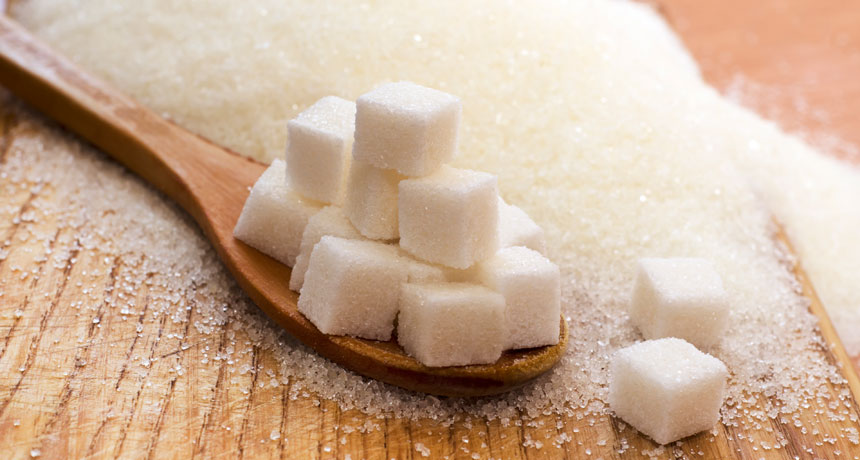Sugar makes mice sleepy
Sugar may explain the nap-inducing effect of sweets or a big meal

Sweet sleep aid? A new study showed that the presence of sugar in the brain encouraged mice to fall asleep faster — and to stay deeply asleep longer — than when their brains did not get that sweet boost.
tycoon751/ iStockphoto
Many parents think their kids become hyperactive after eating candy or other sweets. But sugar may actually cause drowsiness, not hyperactivity. That’s the conclusion of a new study in mice.
“We all experience this strong feeling of sleepiness after a very large meal,” says Christophe Varin. As a neuroscientist at Lyon Neuroscience Research Center and ESPCI ParisTech in France, he studies the brain. His team’s new research now suggests that sugar is the reason that post-meal naps are often irresistible.
In their study, Varin and his colleagues injected glucose — a type of simple sugar — directly into the brains of mice. This mimicked what happens after a big dinner. Meals, particularly those loaded with carbohydrates, raise sugar levels in the brain. Carbohydrates include sugars and starches, such as those that serve as the building blocks of table sugar, fruit juice, flours, rice and potatoes.
The scientists injected the glucose into an area of the brain called the VLPO. It stands for ventrolateral preoptic nucleus (VEN-troh-LAT-er-ul PRE-op-tik NU-klee-us). The researchers already knew that VLPO nerve cells were sleep pushers. In fact, various chemicals that carry messages within the brain are known to tamp down the nerve cells’ sleep-inducing activity. That promotes wakefulness. The new study shows that glucose has the opposite effect. It amps up these sleep-promoting cells.
In the first two hours after the glucose injection, mice fell into a deep sleep, called slow-wave sleep. This is different from a type of sleep known as rapid eye movement, or REM. (REM sleep is when most dreams occur.) Mice that got the sugar injection reached deep sleep faster and stayed there longer than mice injected with a nonsugar solution, the team found.
VLPO nerve cells can directly sense the glucose in their neighborhood, other experiments revealed. And the more glucose the nerve cells detected, the more they fired their sleep-inducing signals. The scientists reported their findings July 8 in the Journal of Neuroscience.
The idea that sugar can lead to drowsiness may not only surprise parents. It also might shock the makers of energy drinks. These beverages often are chock-full of sugar. And they can lead to immediate surges in alertness. But over longer periods of time, high-sugar drinks, at least those with little caffeine, might actually promote sleepiness. Scientists showed that in a 2006 trial published in Human Psychopharmacology: Clinical and Experimental. The new study may help explain why a sugar blast made participants in that earlier study less alert.
There may be a good reason to sleep after a high-sugar meal, says Denis Burdakov. He is a neuroscientist at the Francis Crick Institute in London, England. Sleeping soon after eating ensures that a person or animal sticks close to a good food source, he says. “Moving less when sugar is around makes basic survival sense.”
Scientists suspect that people have nerve cells similar to those in the rodents’ VLPO. More experiments are needed, however, to reveal if such human cells also respond similarly to sugar.
Power Words
(for more about Power Words, click here)
caffeine A stimulant, which activates the nervous system and heart. The leaves, seeds and fruits of many plants contain caffeine. In coffee plants and tea bushes, caffeine acts as a natural pesticide. It will kill or harm insects that attempt to dine on the plant. Caffeine is also toxic to some types of plants, bacteria — even frogs and dogs.
carbohydrates Any of a large group of compounds occurring in foods and living tissues, including sugars, starch and cellulose. They contain hydrogen and oxygen in the same ratio as water (2:1) and typically can be broken down to release energy in the animal body.
glucose A simple sugar that is an important energy source in living organisms. It is half of the molecule that makes up table sugar (also known as sucrose).
neuron or nerve cell Any of the impulse-conducting cells that make up the brain, spinal column and nervous system. These specialized cells transmit information to other neurons in the form of electrical signals.
neuroscience Science that deals with the structure or function of the brain and other parts of the nervous system. Researchers in this field are known as neuroscientists.
REM sleep A period of sleep that takes its name for the rapid eye movement, or REM, that occurs. People dream during REM sleep, but their bodies can’t move. In non-REM sleep, breathing and brain activity slow, but people can still move about.
slow-wave sleep Also known as deep sleep or non-REM sleep. This is the largely dreamless stage of sleep when a person or animal gets the most rest.
starch A soft white chemical made by all green plants. It’s a relatively long molecule made from linking together a lot of smaller, identical building blocks — all of them glucose, a simple sugar. Plants and animals use glucose as an energy source. Plants store that glucose, in the form of starch, as a reserve supply of energy. Animals that consume starch can break down the starch into glucose molecules to extract the useful energy.
ventolateral preoptic nucleus A tiny area deep within the brain, located roughly in the center of the head. It promotes sleep by decreasing arousal, or sensitivity to stimuli. When we fall asleep, this region of the brain releases chemicals. Called neurotransmitters, these chemicals suppress activity in other areas of the brain. That helps diminish arousal, so sounds and other stimuli don’t easily awake us. Upon awakening, other brain areas send chemicals to the ventrolateral preoptic nucleus to shut it down and thereby promote alertness.







